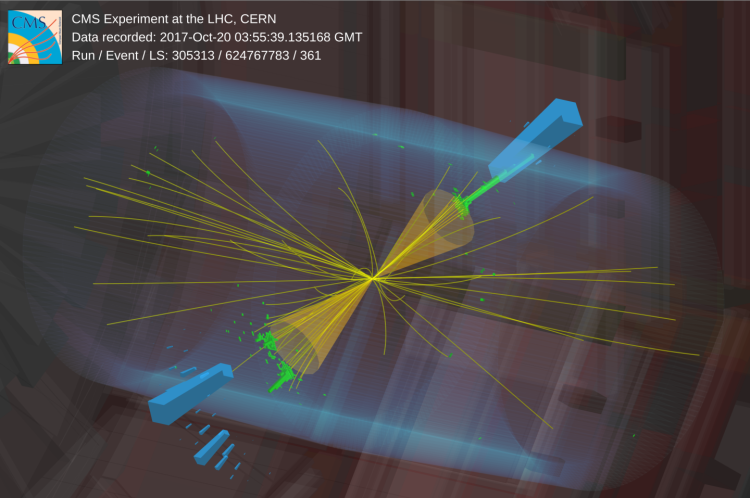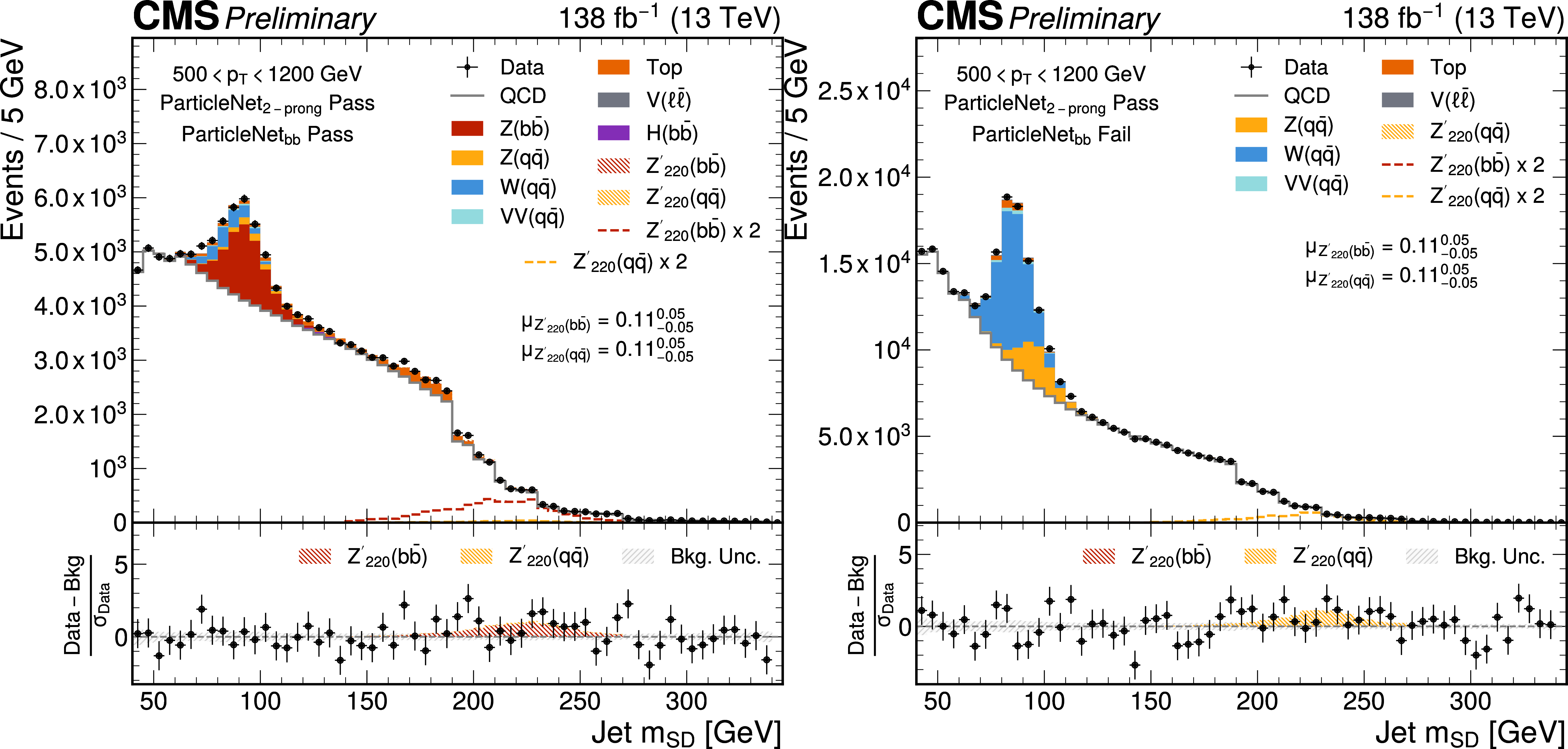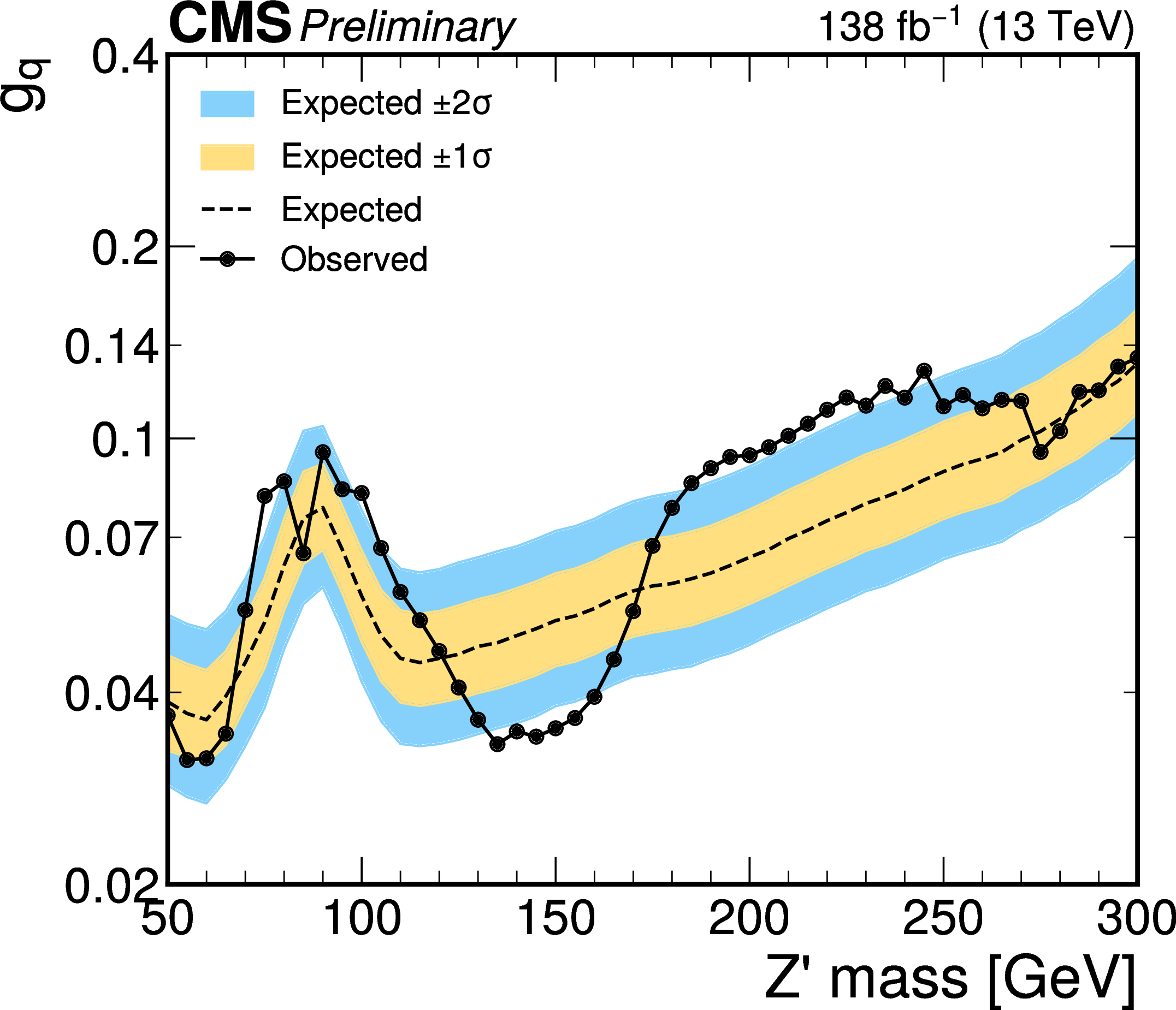
The completion of the standard model (SM) with the discovery of the Higgs boson stands as a resounding success in the world of particle physics. However, significant questions remain unanswered, such as the nature of dark matter (DM), and the forces through which DM interacts. In the quest to uncover the mysteries beyond the SM, researchers at the CMS experiment have taken a significant step forward.
Many new theories predict resonances that decay to pairs of quarks. In particular, models that explain dark matter propose a portal particle that connects the SM with the dark sector. It may well be that such portal particles are being produced at the LHC. We just have to go and find them in the large amounts of LHC data, like a needle in a haystack.
The portal particle could be detected directly and most generically by looking for a resonance decaying to two quarks. However, decays into quarks are particularly challenging at the LHC since there are overwhelming backgrounds. Even the well-known SM processes of the weak-force W and Z bosons decaying into quarks are hard to see. Going one step further and putting bounds on new physics presents an even harder challenge, particularly in the low mass regime where the backgrounds are exceptionally large.
Here, we cover the critical light resonance regime from 50 to 300 GeV, probing the region with the electroweak W, Z and Higgs bosons. This light regime is crucial to dark matter theories and the predicted Z’ boson resonances could be the key to shedding new light on the dark sector.
To facilitate the identification of Z’ boson signatures in collision data, the researchers constrain the search regime to candidates produced with large transverse momenta (pT). This ensures that the two quarks from the Z’ decay are collimated and can be reconstructed as one single large-radius jet. In the absence of other distinct features of the Z’ boson, the jets observed in the detector originate primarily from overwhelming background processes from strong interactions, described by quantum chromodynamics (QCD).
Leveraging the inner structure of the jets and the particle-level information available from the CMS detector, a state-of-the-art graph neural network algorithm, called “ParticleNet”, is used to distinguish candidates that are more likely to originate from resonances — in particular resonances decaying to pairs of bottom-flavor quarks. Finally, data-driven techniques are used to model the QCD background, reducing uncertainties and improving the search sensitivity. The search is performed using CMS data recorded in the years 2016 to 2018 and the results are illustrated for a Z’ model with a mass of 220 GeV in Figure 1. The agreement between the data residuals and the zero line in the bottom panel demonstrates the excellent background estimation of the QCD, W, and Z boson processes.
“With no excess observed, we obtain world-leading limits on low-mass new particles that decay to quarks, dramatically improving over existing limits by a factor of two” say Jeffrey Krupa and Andrzej Novák, who are co-leading the effort. These results are shown in Figure 2. Furthermore, limits are set on scalar resonances (Φ) that decay only to b-quarks which display the same improvement. Moreover, we observe the largest amount of hadronically decaying W bosons ever, and the most significant ever Z to b-quark mass peak at a hadron collider. As a result, the impact of this work will ultimately lead to a better understanding of the weak force in addition to the world-leading bounds on Z’ bosons.
The landscape for discovering new physics is brighter than ever. By recording more data and further improving AI-based jet taggers, powerful statements will be made about hidden dark matter.

Figure 1: The jet mass distribution in the signal regions showing the full Run 2 dataset. A hypothesized Z’ mass of 220 GeV is considered. The SM backgrounds are modeled excellently, and very significant W and Z boson peaks are observed.

Figure 2: Limits on the coupling between Z’ and all quark flavors as a function of Z’ mass. These represent the most sensitive limits to date.
Read more about these results:
-
CMS Paper (EXO-24-007): "Search for low mass vector and scalar resonances decaying into quark-antiquark pairs"
-
Display of collision events: CERN CDS
-
@CMSExperiment on social media: LinkedIn - facebook - twitter - instagram
- Do you like these briefings and want to get an email notification when there is a new one? Subscribe here

